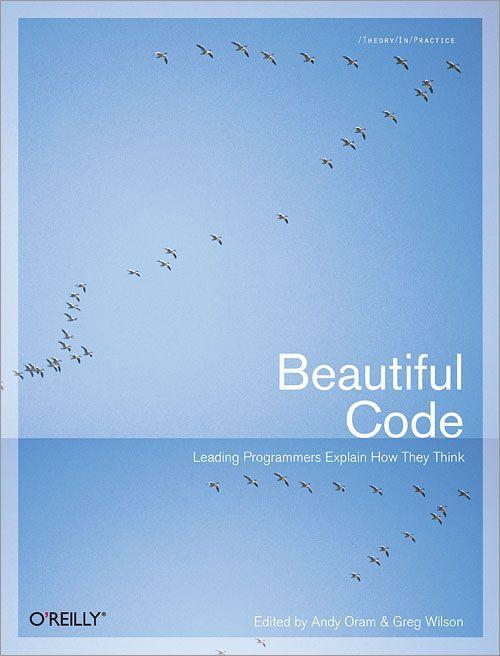
Zustellung: Do, 31.07. - Di, 05.08.
Versand in 2 Wochen
VersandkostenfreiBestellen & in Filiale abholen:
How do the experts solve difficult problems in software development? In this unique and insightful book, leading computer scientists offer case studies that reveal how they found unusual, carefully designed solutions to high-profile projects. You will be able to look over the shoulder of major coding and design experts to see problems through their eyes.
This is not simply another design patterns book, or another software engineering treatise on the right and wrong way to do things. The authors think aloud as they work through their project's architecture, the tradeoffs made in its construction, and when it was important to break rules.
This book contains 33 chapters contributed by Brian Kernighan, KarlFogel, Jon Bentley, Tim Bray, Elliotte Rusty Harold, Michael Feathers,Alberto Savoia, Charles Petzold, Douglas Crockford, Henry S. Warren,Jr., Ashish Gulhati, Lincoln Stein, Jim Kent, Jack Dongarra and PiotrLuszczek, Adam Kolawa, Greg Kroah-Hartman, Diomidis Spinellis, AndrewKuchling, Travis E. Oliphant, Ronald Mak, Rogerio Atem de Carvalho andRafael Monnerat, Bryan Cantrill, Jeff Dean and Sanjay Ghemawat, SimonPeyton Jones, Kent Dybvig, William Otte and Douglas C. Schmidt, AndrewPatzer, Andreas Zeller, Yukihiro Matsumoto, Arun Mehta, TV Raman,Laura Wingerd and Christopher Seiwald, and Brian Hayes.
Beautiful Code is an opportunity for master coders to tell their story. All author royalties will be donated to Amnesty International.
This is not simply another design patterns book, or another software engineering treatise on the right and wrong way to do things. The authors think aloud as they work through their project's architecture, the tradeoffs made in its construction, and when it was important to break rules.
This book contains 33 chapters contributed by Brian Kernighan, KarlFogel, Jon Bentley, Tim Bray, Elliotte Rusty Harold, Michael Feathers,Alberto Savoia, Charles Petzold, Douglas Crockford, Henry S. Warren,Jr., Ashish Gulhati, Lincoln Stein, Jim Kent, Jack Dongarra and PiotrLuszczek, Adam Kolawa, Greg Kroah-Hartman, Diomidis Spinellis, AndrewKuchling, Travis E. Oliphant, Ronald Mak, Rogerio Atem de Carvalho andRafael Monnerat, Bryan Cantrill, Jeff Dean and Sanjay Ghemawat, SimonPeyton Jones, Kent Dybvig, William Otte and Douglas C. Schmidt, AndrewPatzer, Andreas Zeller, Yukihiro Matsumoto, Arun Mehta, TV Raman,Laura Wingerd and Christopher Seiwald, and Brian Hayes.
Beautiful Code is an opportunity for master coders to tell their story. All author royalties will be donated to Amnesty International.
Inhaltsverzeichnis
Dedication
Foreword
Preface
Chapter 1: A Regular Expression Matcher
Chapter 2: Subversion's Delta Editor: Interface As Ontology
Chapter 3: The Most Beautiful Code I Never Wrote
Chapter 4: Finding Things
Chapter 5: Correct, Beautiful, Fast (in That Order): Lessons from Designing XML Verifiers
Chapter 6: Framework for Integrated Test: Beauty Through Fragility
Chapter 7: Beautiful Tests
Chapter 8: On-the-Fly Code Generation for Image Processing
Chapter 9: Top Down Operator Precedence
Chapter 10: The Quest for an Accelerated Population Count
Chapter 11: Secure Communication: The Technology Of Freedom
Chapter 12: Growing Beautiful Code in BioPerl
Chapter 13: The Design of the Gene Sorte
Chapter 14: How Elegant Code Evolves with Hardware The Case of Gaussian Elimination
Chapter 15: The Long-Term Benefits of Beautiful Design
Chapter 16: The Linux Kernel Driver Model: The Benefits of Working Together
Chapter 17: Another Level of Indirection
Chapter 18: Python's Dictionary Implementation: Being All Things to All People
Chapter 19: Multidimensional Iterators in NumPy
Chapter 20: A Highly Reliable Enterprise System for NASA's Mars Rover Mission
Chapter 21: ERP5: Designing for Maximum Adaptability
Chapter 22: A Spoonful of Sewage
Chapter 23: Distributed Programming with MapReduce
Chapter 24: Beautiful Concurrency
Chapter 25: Syntactic Abstraction: The syntax-case Expander
Chapter 26: Labor-Saving Architecture: An Object-Oriented Framework for Networked Software
Chapter 27: Integrating Business Partners the RESTful Way
Chapter 28: Beautiful Debugging
Chapter 29: Treating Code As an Essay
Chapter 30: When a Button Is All That Connects You to the World
Chapter 31: Emacspeak: The Complete Audio Desktop
Chapter 32: Code in Motion
Chapter 33: Writing Programs for "The Book"
Afterword
Contributors
Colophon
Produktdetails
Erscheinungsdatum
31. Juli 2007
Sprache
englisch
Seitenanzahl
618
Herausgegeben von
Andy Oram, Greg Wilson
Verlag/Hersteller
Produktart
kartoniert
Gewicht
1000 g
Größe (L/B/H)
236/180/42 mm
ISBN
9780596510046
Pressestimmen
"In Beautiful Code präsentieren Andy Oram und Greg Wilson 33 Beiträge von Softwareentwicklern. [...] Dieses Buch bietet eine gute Grundlage für anregende Diskussionen über 'guten' Code, Schönheit und wahrscheinlich auch Qualität von Software." javamagazin, Januar 2008
"Kann ein Code schön sein? Darauf kannst du wetten! In dieser Sammlung von Artikeln zum Thema wird dem Leser die Schönheit von Code, bzw. dem Prozess des Programmierens/der Softwareentwicklung näher gebracht. [...]" - gungfu.de, November 2007
"Kein technisches Buch im eigentlichen Sinne, sondern eine Sammlung von Essays von führenden Programmierern über Code, Entwürfe und Programme, die sie als Beuatiful Code bezeichnen würden. Wirklich gut. Wirklich ausgezeichnete Autoren. [...]" - dirkmeister.de, November 2007
"Hervorragendes Buch in dem mehrere Experten viele interessante Denkanstösse für Entwickler zum Besten geben." - blog.jensfranke.com, November 2007
"Alle Autoren haben zu einer eindrucksvollen Sammlung beigetragen und dürften mit ihrer Arbeit andere animieren, doch mal einen Blick über den Tellerrand zu werfen." - c't Heft 19, September 2007
"Kann ein Code schön sein? Darauf kannst du wetten! In dieser Sammlung von Artikeln zum Thema wird dem Leser die Schönheit von Code, bzw. dem Prozess des Programmierens/der Softwareentwicklung näher gebracht. [...]" - gungfu.de, November 2007
"Kein technisches Buch im eigentlichen Sinne, sondern eine Sammlung von Essays von führenden Programmierern über Code, Entwürfe und Programme, die sie als Beuatiful Code bezeichnen würden. Wirklich gut. Wirklich ausgezeichnete Autoren. [...]" - dirkmeister.de, November 2007
"Hervorragendes Buch in dem mehrere Experten viele interessante Denkanstösse für Entwickler zum Besten geben." - blog.jensfranke.com, November 2007
"Alle Autoren haben zu einer eindrucksvollen Sammlung beigetragen und dürften mit ihrer Arbeit andere animieren, doch mal einen Blick über den Tellerrand zu werfen." - c't Heft 19, September 2007









